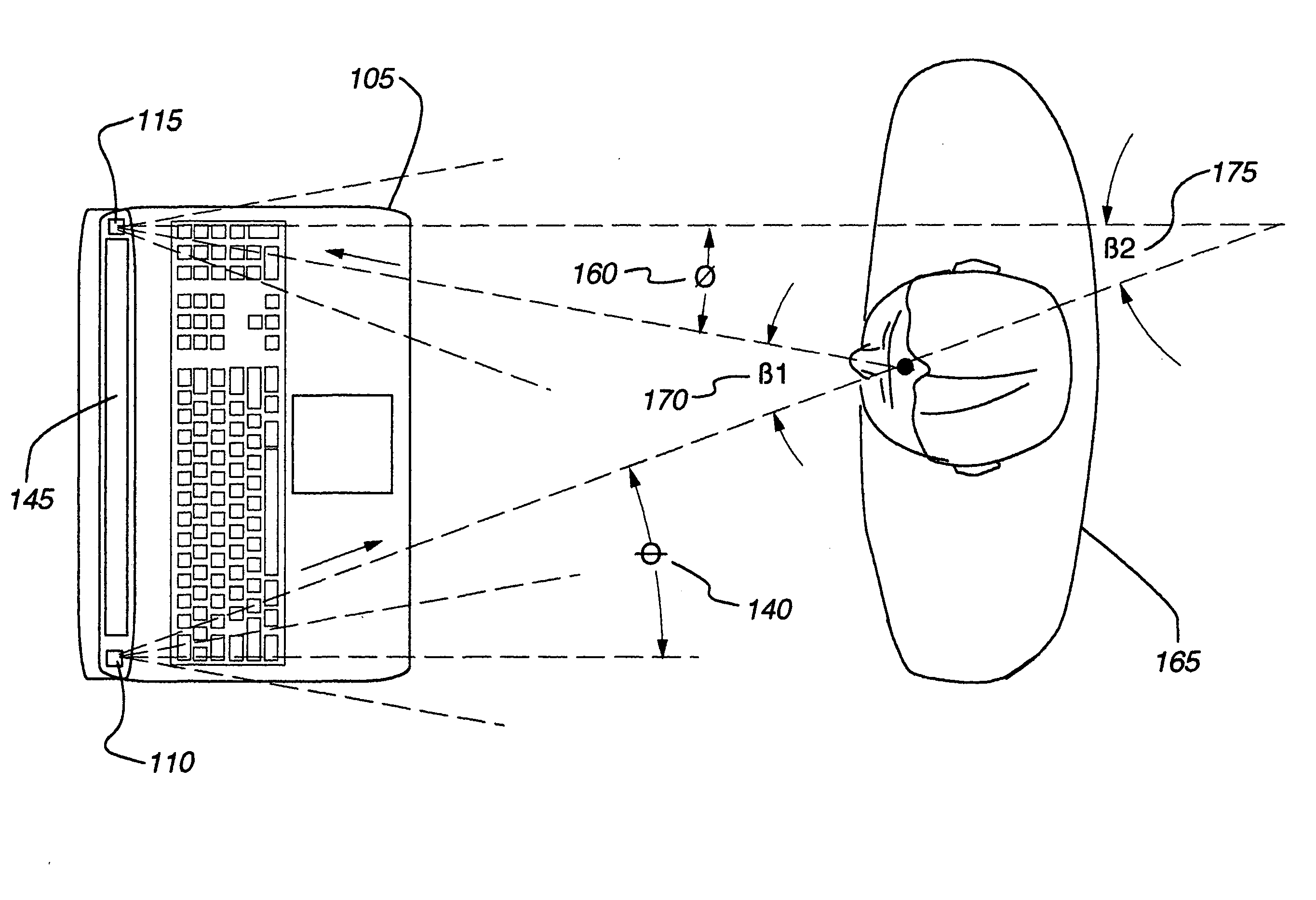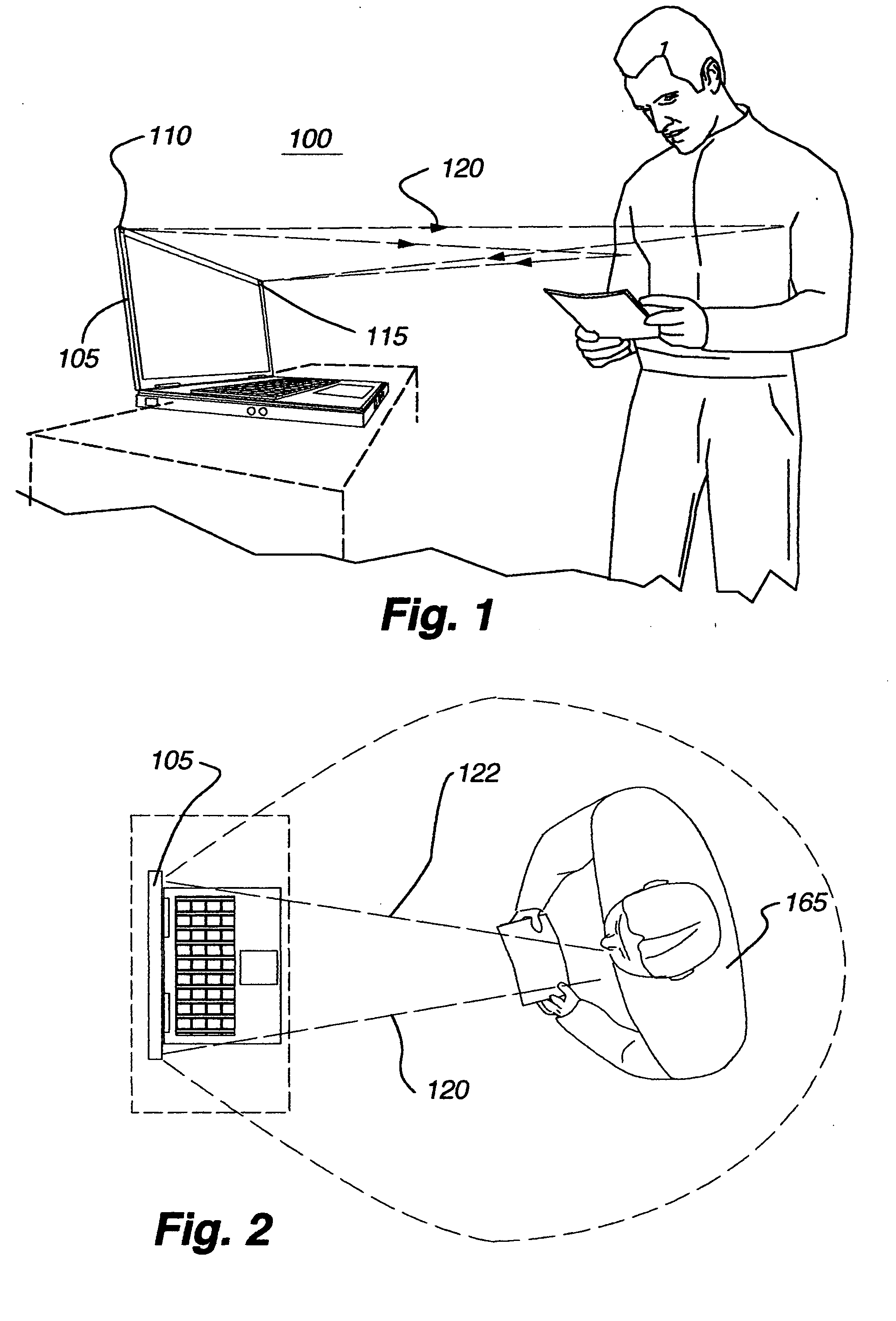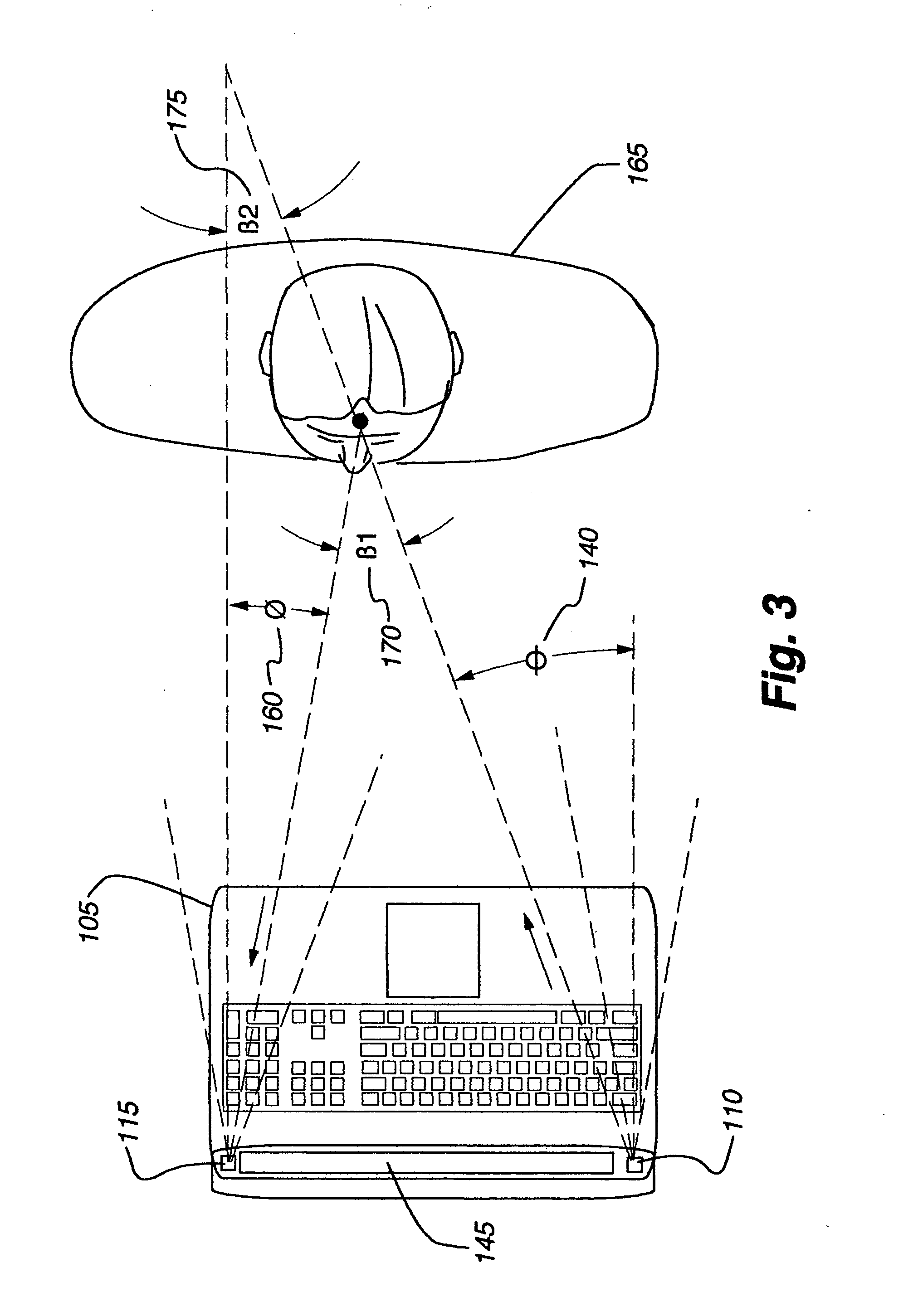Method and apparatus for remotely detecting presence
a technology for remotely detecting and detecting persons, applied in the field of presence detection, can solve the problems of significant power consumption of electronic devices and/or may suffer deleterious effects, and achieve the effect of enhancing user experience and reducing power consumption
- Summary
- Abstract
- Description
- Claims
- Application Information
AI Technical Summary
Benefits of technology
Problems solved by technology
Method used
Image
Examples
first embodiment
2. FIRST EMBODIMENT OF THE INVENTION
[0025]FIGS. 1 and 2 depict a first embodiment 100 of the inventions placed in a notebook computer 105. Here, the notebook computer is an example of a “related device.” Generally, the embodiment includes an emitter 110 and a detector 115. Infrared beams 120 are projected by the emitter 110 and received by the detector 115 after reflecting from an object within the embodiment's detection field 125. The detection field may be one-dimensional (linear), two dimensional (planar), or three-dimensional depending upon the configuration of the emitter and detector. Alternative embodiments of the present invention may emit a variety of radiation, such as ultraviolet light or any other light frequency. Yet other embodiments may employ acoustic reflection, such as SONAR, or a steered infrared laser in place of the emitter array described herein.
[0026] The infrared beams 120 projected by the emitter 110 define a volume of sensitivity, referred to herein as a “...
PUM
 Login to View More
Login to View More Abstract
Description
Claims
Application Information
 Login to View More
Login to View More - R&D
- Intellectual Property
- Life Sciences
- Materials
- Tech Scout
- Unparalleled Data Quality
- Higher Quality Content
- 60% Fewer Hallucinations
Browse by: Latest US Patents, China's latest patents, Technical Efficacy Thesaurus, Application Domain, Technology Topic, Popular Technical Reports.
© 2025 PatSnap. All rights reserved.Legal|Privacy policy|Modern Slavery Act Transparency Statement|Sitemap|About US| Contact US: help@patsnap.com



